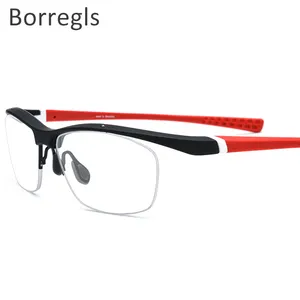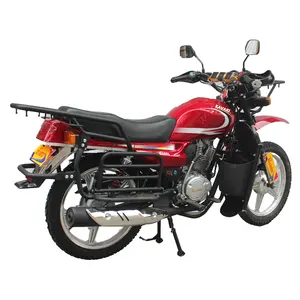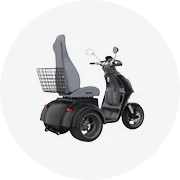Popular na sua indústria






Óculos de leitura coloridos de alta qualidade com especificações de 1 dólar por atacado

€ 0,4651 - € 0,6046
Pedido Mínimo: 300 Pares

- 10%






Lucky Custom Brand Logo Designer Óculos De Sol Moda Gafas De Sol Shades Preto Chunky Vintage Óculos De Sol Quadrados Pronto para enviar
Pronto para enviar
 Pronto para enviar
Pronto para enviar€ 1,01 - € 1,30
Pedido Mínimo: 2 Peças
Envio por peça: € 2,57







Óculos de leitura unissex populares para PC OEM de estilo simples, armação quadrada pequena anti-luz azul

€ 0,6511 - € 0,7906
Pedido Mínimo: 300 Pares







SH297 China fabricar Óculos Ópticos Rimless Quadros Mulheres Stock Titanium Óculos Óculos
Pronto para enviar
€ 10,61 - € 13,68
Pedido Mínimo: 2 Peças
Envio por peça: € 6,90







Moda infantil óculos de olho armações de luz azul bloqueando óculos óticos moda transparente TR
Pronto para enviar
€ 3,92 - € 4,96
Pedido Mínimo: 1 Peça
Envio por peça: € 15,23







Armação de óculos de metal ótico, armação de metal inoxidável aleatória para óculos ópticos
Pronto para enviar
€ 0,1861 - € 2,33
Pedido Mínimo: 12 Peças
Envio por peça: € 2,95






Borregls TR90 Óculos de armação masculino de alta qualidade Designer de marca esportiva Óculos quadrados sem aro Óculos ópticos 7027
Pronto para enviar
€ 5,90 - € 9,45
Pedido Mínimo: 1 Peça
Envio por peça: € 4,78






Armação de metal ótica, armação de metal da marca, nome da moda, meia armação para homens, escritório
€ 0,8185 - € 1,10
Pedido Mínimo: 2 Pares






2024 Blue Light Blocking Computer Glasses Women New Brand Cat Eye Optical Frame Big Leopard Eyeglasses Frames For Ladies
Pronto para enviar
€ 1,96 - € 2,42
Pedido Mínimo: 10 Peças
Envio por peça: € 1,70






Óculos de leitura unissex, armação de óculos para homens com nome, óculos óptico tr90, óculos de luxo com prescrição
Pronto para enviar
€ 3,01 - € 4,12
Pedido Mínimo: 2 Peças
Envio por peça: € 3,50






Armação de óculos feminina tipo olho de gato, armação de óculos de grau feminina, clássica, transparente
Pronto para enviar
€ 2,71 - € 3,35
Pedido Mínimo: 8 Peças
Envio por peça: € 1,89






Armação de óculos feminina, armação de óculos de grau feminina, quadrado 2022
Pronto para enviar
€ 2,46 - € 3,15
Pedido Mínimo: 30 Peças
Envio por peça: € 0,9488





Armação de óculos masculina, óculos de titânio sem aro, armação para óculos de grau para miopia
Pronto para enviar
€ 32,56 - € 41,86
Pedido Mínimo: 2 Peças
Envio por peça: € 2,80






Óculos de metal decorativos incomuns para mulheres, armações de óculos retrô vermelhos personalizados para mulheres, marca 2024
Pronto para enviar
€ 5,58 - € 7,44
Pedido Mínimo: 2 Peças
Envio por peça: € 3,59






Óculos femininos com bloqueio de luz azul, armação feminina com logotipo personalizado, armação ótica de metal 95538
Pronto para enviar
€ 3,91 - € 4,19
Pedido Mínimo: 1 Peça
Envio por peça: € 4,22
- 10%






Custom 2023 Luxo Marca Polygon Square Mulheres Óculos Quadro Claro Anti Luz Azul Homens Ópticos Coloridos Leopard Óculos Quadros
Pronto para enviar
€ 1,85 - € 2,05
Pedido Mínimo: 10 Peças
Envio por peça: € 0,5023
- 50%






Atacado óculos retrô quadrados pretos femininos da moda, armações de óculos masculinas de grife de marca da moda 2024 Pronto para enviar
Pronto para enviar
 Pronto para enviar
Pronto para enviar€ 2,23 - € 2,51
Pedido Mínimo: 2 Peças
Envio por peça: € 4,66






Óculos de grau, quadrado, lente clara, armação de ouro, com óculos transparentes, para mulheres, óculos de miopia óculos, de luxo, imperdível
Pronto para enviar
€ 2,70 - € 3,54
Pedido Mínimo: 10 Peças
Envio por peça: € 1,43






Marcas famosas alta definição bela fantasia tr90 armações de óculos ótico
€ 9,31
Pedido Mínimo: 500 Peças






Armações óticas de acetato, armação de óculos transparente, vintage, famosas, japonesa
€ 4,42 - € 5,26
Pedido Mínimo: 300 Pacotes





Marcas de óculos japonesas tr90, armação de óculos de prescrição ótica
Pronto para enviar
€ 6,05
Pedido Mínimo: 15 Peças
Envio por peça: € 2,50






Rodada Acetato Grosso Óculos Quadro 8006 Brand Designer Homens Mulheres Retro Óculos Ópticos Quadros Óculos de Leitura Óculos
Pronto para enviar
€ 16,75 - € 20,47
Pedido Mínimo: 2 Pares
Envio por peça: € 4,66




Óculos de acetato ótico redondo de alta qualidade personalizados para mulheres, armações de óculos de marca, 2024

€ 4,66 - € 5,59
Pedido Mínimo: 299 Peças






Armações de óculos de titânio semi sem aro pg0165
Pronto para enviar
€ 1,57 - € 2,17
Pedido Mínimo: 1 Peça
Envio por peça: € 4,77




Óculos unissex barato, óculos de grau para venda italiana
Pronto para enviar
€ 7,45
Pedido Mínimo: 12 Peças
Envio por peça: € 0,9581






7708 2024 Atacado Óculos Ópticos Moda Custom Brand Spectacle Frames Óculos Ópticos Unisex em Stock Style Eyewear
Pronto para enviar
€ 0,7162 - € 1,21
Pedido Mínimo: 5 Peças
Envio por peça: € 1,95






Armação de óculos de marca famosa, armação de vidro para homens
Pronto para enviar
€ 4,46 - € 4,74
Pedido Mínimo: 10 Peças
Envio por peça: € 1,49






Johnny óculos de acetato, óculos de grau redondo e transparente, unissex, para computador
Pronto para enviar
€ 3,35 - € 4,28
Pedido Mínimo: 5 Pares
Envio por peça: € 1,63






Armações de óculos de titânio prata t81831, novos designers elegantes de china
€ 9,31 - € 9,77
Pedido Mínimo: 50 Peças






Armações de Óculos de acetato de Óculos Óptica 5 Cores Da Marca Eyewear Multicolor 2020 Luxo para Leitura ou Decoração Miopia Unisex
Pronto para enviar
€ 5,59 - € 6,52
Pedido Mínimo: 1 Peça
Envio por peça: € 8,29






Luxo Brand Designer Óculos Retro Luz Azul Bloqueio TR90 Quadros Óculos Ópticos Quadros Para homens
Pronto para enviar
€ 1,31 - € 2,05
Pedido Mínimo: 2 Peças
Envio por peça: € 4,58






Armação de óculos feminina, armação de óculos da moda para mulheres, com armação de metal, logotipo personalizado
Pronto para enviar
€ 4,10 - € 4,47
Pedido Mínimo: 6 Peças
Envio por peça: € 2,87






2023 Vintage Titanium Glasses Frame Homens Round Optical Frame Customizável Prescrição Eyewear Mulheres Luxo Marca
Pronto para enviar
€ 7,96 - € 10,24
Pedido Mínimo: 2 Peças
Envio por peça: € 3,83
- 10%






2024 Marca de metal cat Eye Óculos Óculos Ópticos Quadros Anti Luz Azul Bloqueio Clear Myopia Óculos fotocrômicos Quadros
Pronto para enviar
€ 1,34 - € 1,97
Pedido Mínimo: 1 Peça
Envio por peça: € 4,56






Óculos de acetato de alta qualidade, design em atacado, armação de óculos de wenzhou ótico
Pronto para enviar
€ 5,21
Pedido Mínimo: 12 Peças
Envio por peça: € 0,893






Armação de óculos de acetato unissex, armação quadrada de titânio, óculos para miopia, ótico, luxuosa, 2022
Pronto para enviar
€ 12,56 - € 13,40
Pedido Mínimo: 2 Peças
Envio por peça: € 3,38






Armação de óculos sem parafusos CS5530 Retro Oval para homens e mulheres, armação de óculos com prescrição para miopia óptica, design de marca Pronto para enviar
Pronto para enviar
 Pronto para enviar
Pronto para enviar€ 11,91 - € 14,79
Pedido Mínimo: 2 Peças
Envio por peça: € 5,80






Ms 95538 armação de óculos de bloqueio de luz azul, armação feminina ótica com logotipo personalizado
Pronto para enviar
€ 3,82 - € 4,19
Pedido Mínimo: 1 Peça
Envio por peça: € 15,26
Principais categorias
Sobre marcas óculos quadro
Alibaba.com é o melhor lugar se você deseja colocar as mãos em alguns dos mais avançados e de alta capacidade. marcas óculos quadro. marcas óculos quadro são muito populares como veículos off-road e podem atender a essa finalidade com eficácia máxima. No entanto, hoje em dia, muitas pessoas estão inclinadas a esses monstruosos. marcas óculos quadro e as pessoas os compram independentemente de quererem levá-los para fora das estradas. Compre-os com descontos globais e preços emocionantes dos principais vendedores do site.
marcas óculos quadro são de vários tipos, como elétricos, veículos a gás, veículos a diesel e assim por diante. Independentemente da variante, todos são igualmente poderosos. O resistente e robusto. As marcas óculos quadro disponíveis no site são veículos 4 tempos e vêm com transmissão automática. O consumo de combustível desses potentes. marcas óculos quadro é de aproximadamente 3 L para cada 100 KM e eles vêm com capacidade suficiente do tanque de combustível não inferior a 6 L.
A versão elétrica destes. marcas óculos quadro em Alibaba.com são muito populares e vêm com capacidades de tensão distintas, transmissão automática e sistemas de transmissão por eixo. Eles são equipados com baterias potentes e o tempo de carga para estes eficientes off-road elétricos. marcas óculos quadro varia de 6 a 8 horas. Você pode escolher entre uma variedade de. marcas óculos quadro dependendo de seus modelos, cores, tamanhos e capacidades. Eles são pesados e, portanto, não representam o risco de derrapagem durante a condução.
Você pode adquirir esses veículos de acordo com seu orçamento explorando os diversos. marcas óculos quadro varia em Alibaba.com e economize dinheiro com eles. Esses veículos são certificados pela ISO, EPA e podem ser enviados com cuidado extra. Pedidos OEM estão disponíveis e você pode solicitar embalagens personalizadas ao comprar a granel.
A versão elétrica destes. marcas óculos quadro em Alibaba.com são muito populares e vêm com capacidades de tensão distintas, transmissão automática e sistemas de transmissão por eixo. Eles são equipados com baterias potentes e o tempo de carga para estes eficientes off-road elétricos. marcas óculos quadro varia de 6 a 8 horas. Você pode escolher entre uma variedade de. marcas óculos quadro dependendo de seus modelos, cores, tamanhos e capacidades. Eles são pesados e, portanto, não representam o risco de derrapagem durante a condução.
Você pode adquirir esses veículos de acordo com seu orçamento explorando os diversos. marcas óculos quadro varia em Alibaba.com e economize dinheiro com eles. Esses veículos são certificados pela ISO, EPA e podem ser enviados com cuidado extra. Pedidos OEM estão disponíveis e você pode solicitar embalagens personalizadas ao comprar a granel.






























